Author(s)
Elizabeth Freeman, Amelia Groom
Tijdsgebonden drag, erohistoriografia, chronomornativiteit, geilheid onder het kapitalisme, ritme, dansen en 'crip time'. Dit zijn een paar van de onderwerpen die worden genoemd in het interview met Elizabeth Freeman, queer theoreticus en auteur van de boeken Time Binds: Queer Temporalities, Queer Histories (2010) en Beside You In Time: Sense Methods & Queer Sociabilities in the American 19th Century (2017), en Amelia Groom, co-editor van de 'No Linear Fucking Time' focus op Prospections.

Elizabeth Freeman: It started when I saw my friend Elisabeth Subrin’s film Shulie (1997), which is a restaging of a long-lost documentary about Shulamith Firestone. In many ways, it’s a film about time. It has this odd kind of ghostly nowness, and it deals with this sense of feminism’s belatedness, where problems that were articulated with such urgency thirty years prior are felt to be still very much with us. I saw the film around the time of “Y2K,” and everyone was thinking about time, because we were approaching the turn of the millennium. These were also the early years of queer theory, and I started thinking, “So much of queer theory has been articulated around questions of space. What would happen if you just turned the prism and you read for time? What would you get?” I wanted to think about Shulie in terms of drag performance, drawing out the aspects of Judith Butler’s theory of drag that were temporal, and ask what it would mean if drag was understood as having something to do with feeling across time, rather than just relating to social constructs in the now. The first thing I published on time was an article in the year 2000, which was about the idea of temporal drag.
AG: Temporal drag: a kind of cross-dressing that involves crossing temporal boundaries.
EF: Right. With temporal drag I was interested in drag that was not necessarily cross-gender drag, but it was still a way of saying “I do not live my gender in a normative way.” What makes it drag is that it is not about passing; it has a gap, a fissure that you can see through, and sometimes the way to make that fissure is temporal. Think of somebody like Amy Sedaris, who does this 1950s housewife act. She is very cis feminine, but when she puts it on you know that it is satire—you know that she is remarking ironically both on the distance between those gender norms and her own, and also on the things that have not changed at all. That kind of drag became interesting to me, partly as someone who identifies as femme, where gender crossing is not always what’s happening with my sense of my own gender, but where there is still an experience of disjuncture in the kinds of gender that I can wear on my body.
AG: In your book Time Binds, temporal drag features as part of your interest in queer practices that defy or disrupt “chrononormativity,” a term you define as “the use of time to organize individual human bodies toward maximum productivity” and “a mode of implantation, a technique by which institutional forces come to seem like somatic facts.” 1 Could you comment on how temporal drag can work against the atomization of individual bodies by forging unlikely connections across historical distances?
EF: The sense of affiliation created by historical drag can be really interesting. It can be very ironic, like, “I’m Marie Antoinette,” or it can be a very passionate and genuinely affiliative thing like, “I feel akin to a nineteenth century Boston spinster.” Poet and scholar Chris Nealon—in his influential book Foundlings (2001)—has that great phrase “affect genealogies,” and I think that temporal drag is one way to achieve a felt sense of affiliation across time, where it’s not about descent. It’s not saying, “I have inherited this.” It’s more like reaching across time and saying, “This is something that I can express that says something about my gender today.”
AG: The term was quite widely embraced, and it became the title of the artist duo Pauline Boudry and Renate Lorenz’s book Temporal Drag (2011).
EF: I think that, intuitively, the idea made sense to people. Partly because the word drag is already kind of temporal—if you think about dragging your feet, or dragging behind, or time dragging on. And I think that people understood that drag was about time in some way, because drag performances would draw so frequently from outdated iconography and outdated gender norms to signal distance from gender normativity.
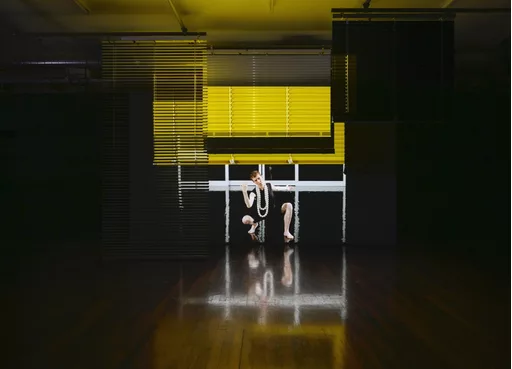
EF: I think the piece is very beautiful, and it’s one where the spatial elements accent the asynchrony. So you have the round, arcing beads competing with the rigid lines of the windows and automatic sliding doors and venetian blinds, and then some dancers are clearly reflected in the glass and others are less so, or the reflections and bodies seem to meet each other and separate. And all of that is going on while your mind is also attending to the rhythm and beat. The interesting thing is that the mind really wants to synchronize: I found myself counting to see if the slowdowns matched up with the faster dancing beside them in any way, or if the strings of beads had rhythm that was a recognizable counterpoint to the dominant beat. I think we really resist total asynchrony, and there’s a relief that synchrony brings, almost akin to the resolution of a dissonant chord into a harmonious one. The mind will make patterns out of almost anything. And then there’s the bodies of the dancers: at first, I found myself wondering if the white-appearing dancers were assigned to slower, modern dances moves while the dancers who appeared to be people of color were representing popular beats, or if the more masculine-appearing dancers were “slow,” and “fastness” signaled femininity or androgyny, and then if the asynchronies between them had any kind of meaning in terms of race or gender. But, of course, the slowdowns within the dances meant that each dancer was also asynchronous in relation to themselves, and that seems more important: we run on clocks that do not synchronize with one another, try as we might to make them do so. This might be even more true for people of color and/or gender-nonconforming people: the “clocks” and timelines that constitute expectations of—or even normative experiences of—gender or whiteness don’t line up with some aspects of experience of people of color and/or gender-nonconforming people. Or our bourgeois-professional clocks don’t sync with our community-activist clocks. The idea of some parts of oneself being out of sync, not only with the larger culture but with other aspects of oneself, is intriguing!
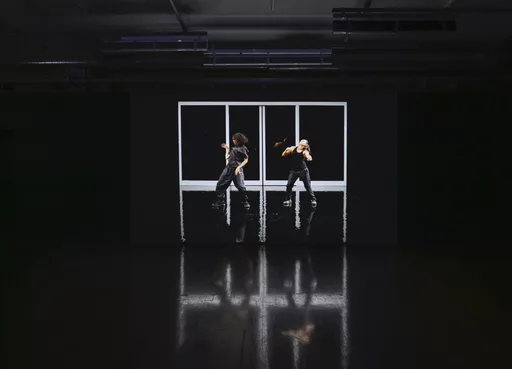
EF: Yes, I really appreciated that aspect of the piece. Thinking of footprints, it’s also clear that movement “forward” leaves traces pointing to the past, and I’ve always been interested in those traces, especially in so-called revolutionary movements that posit themselves as starting over or achieving a radical rupture from what came before. Yet whatever they are repudiating haunts them, as repudiations tend to do. Meanwhile, yes, I love “playing with the appearance of direction, so that one can find other kinds of movement.” Lateral movement is so important, as theorized by Kathryn Bond Stockton in her 2009 book Growing Sideways: appearing to “progress” or “grow up” while actually growing out and extending across. At the same time, I think it’s really important that the Kurdish guerrillas who walked forward while leaving footprints pointing backward, along with these dancers who wear multidirectional shoes, are appropriating a strategy that can be used in reactionary or sinister ways: how many movements tout as “progress” things that are actually a return to oppression? In the US, the dismantling of civil rights has worked that way: institutions and the government tell us that we are post-race and don’t need old-fashioned things like affirmative action, or the right-wing fights for “freedom” from the “tyranny” of critical race studies.
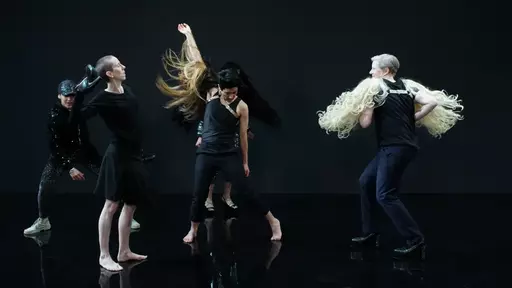
EF: I never thought I would be writing about dance. I am not a dancer at all. I love watching it, but I don’t have a good vocabulary for it. I’m always just like, “Who knew bodies could do that in time and space?!” I’m very verbal and cerebral, so that mode of expressivity for me is just so mysterious and beautiful. But it started to come into my writing when I was thinking about rhythm, and I became really interested in synchrony. In part because of the way in which synchrony on the surface looks really bad. Like, when you think about people acting in tandem, you might think about Taylorism or military drills and parades—things that produce mechanical and alienated deindividualization and catatonic group think. But then there are all kinds of ways in which temporal regulation through collective embodiments can also produce beauty and intervention. And dance is an amazing example of that: when the regulation of tempo through bodies generates a kind of group feeling, which can be nonnormative, and can work against the temporalities of the day. Like with the work song in Baraka’s “Rhythm Travel.” Enslaved people on plantations sang these songs that would regulate their movements and make them productive for the plantation owners, but at the same time the lyrics were incredibly transgressive, and that sense of enlargement and collectivity could produce so many threads through time.
AG: For people who don’t know the short story, it’s about an unnamed time traveller, or “rhythm traveller,” who can move backward and forward in history by becoming music and manifesting wherever (and whenever) that music is (or will be) played. When the traveler disappears into the old song Take This Hammer, they’re is sung onto the scene of a plantation in the antebellum South, where a group of enslaved workers are digging a well, to the accompaniment of their own musical vocality. As you suggest, rhythm functions here as a disciplinary device, when it’s about bodies kept together in time as part of enforced productivity, but then, it’s also a potentially subversive tool in the forging of collective memory and collective pleasure. Baraka’s rhythm traveller describes how the enslaved “got to smilin because [the music] made them feel good” while “the overseers and plantation masters winced.” In your reading of this piece, you write about rhythm and timing as part of how “bodies become oriented toward one another” and “come to feel temporally coincident or connected across historical eras.”
EF: I’m interested in what can happen when we listen to music from another historical period. It’s not that the music fleshes out everything about that historical period for us—it is not like, all of a sudden we know what it was like to be in an eighteenth century minuet, but there are times when we can sort of enter the sensorium of a different era. It’s a really powerful thing. Like when I listen to something from the early 1990s, and suddenly my body actually feels 23 again! I remember the kind of pace, and what it felt like to be in the everyday. I think this is also part of what the Baraka story is doing, it’s this idea of catching that ability of rhythm to bring someone into a scene, and to bring bodies together into something collective. And it’s about the capacity of that collectivity to exceed the normative.
AG: You have written about “erotohistoriography” as a reparative historical method which “honors the way queer relations complexly exceed the present, insisting that various queer social practices, especially those involving enjoyable bodily sensations, produce forms of time consciousness—even historical consciousness—that can intervene into the material damage done in the name of development, civilization, and so on.” 2 This is in your book Time Binds, which came out back in 2010. Has your thinking on the possibilities of the erotohistoriographic approach shifted since then?
EF: I probably started thinking about erotohistoriography around 2004. It was a period when there was a real emphasis on loss and trauma in queer theory, and history was understood in the terms of the thing that hurts, like: when you uncover something historical, it is going to shock your sensibilities in a way that is going to feel mostly negative. But I was interested in the pleasures and the titillations of the archive. In part because my own moment was beginning to be archived. We were starting to see museum exhibits about ACT UP (Aids Coalition to Unleash Power) and Queer Nation, and sometimes it felt weird and I felt old, and sometimes it felt sexy and great like “I am in history,” or “There is my history on a wall and I can touch it,” you know?
It’s kind of this loose and baggy term, erotohistoriography. In part it has been fun for me to see what people do with it, you know. People are like, “What does it mean?” and I am like, “Well, what does it mean to you? Because look at what you are doing, and I did not do that, so it means something more than what I thought it meant.” But part of my relationship with the term in recent years has been a reckoning with the rise of global fascism and the fact that history can be invoked for pleasure in ways that are incredibly reactionary and damaging. Some of it just erases history and says “That did not happen,” or “To think about that makes people uncomfortable and therefore we should just not discuss it,” but some of it can also be this installation of pleasurable false memories. If you think about the Confederate flag, it brings to white Southerners a sense of false history, which also comes with a sense of solidarity. I would not say, “Oh, that is not erotohistoriography, because erotohistoriography is this pure, radical thing and it can only be transgressive.” I don’t think that is the way it works. I don’t think there is any particular technique or methodology or protocol or way of framing analysis that is in and of itself morally good and pure. I think you take those things and you try to mobilize them, for reasons that are liberatory and progressive, while knowing that they can be used otherwise and while being honest about that. What matters is what are you mobilizing it for, rather than the purity of the thing itself. That is what I have been thinking about a lot in the wake of the last five or six very difficult years.
AG: While we are talking about desire and time, I wanted to read a Tweet to you. It says, “being horny is sort of anticapitalist. horniness doesn’t have a schedule, nor a timed structure to follow. it is sporadic and fierce. it is unrestricted by the 9–5 working day. it tows against the plight of capitalism by simply being. time is capitalist. horniness defies that.” 3 This was posted by Twitter user @zer4ph in the largely locked-down February of 2020, and it was liked and shared thousands of times. I was wondering if you could respond to the proposition; you’ve worked a lot on the dimensions of eros involved in relations built across historical distances, what about the unruly temporality of horniness in daily life?
EF: Haha, that’s a great tweet. If you’re asking me to respond seriously, though, I would not say that sex and desire are outside of time, and that time is over here on the side of capitalism. I think it’s more complicated than that. The desire to fuck can feel like a transgression against time and its regulation—you know, when we say “Let’s be late for work,” or whatever—but capitalism also stokes our desire and makes us horny: horny for Diet Coke, or a Tesla, or a really expensive piece of lingerie, or whatever. And Marcuse taught us that capitalism neutralizes the subversive potential of sex.
Capitalism is interested in extracting as much as it can out of everyone it can, and it uses the regulation of time to do that. Certain rhythms and schedules come to feel like second nature, when they are actually very much imposed upon us. One of the things I became interested in while working on both Time Binds and my newest book, Beside You in Time, is the ways that, historically, sex itself became temporally regulated. Think for example of the rhythm method, with the Catholic Church saying “You cannot use birth control, but you can time when you have intercourse.” Or other normative sequences like, “You should be a virgin until X age,” or “You should not have sex until after marriage,” or “You should not have sex with someone unless you kiss them first.” I also became really fascinated with the historian Henry Abelove’s work on the invention of foreplay as part of the history of capitalism. He shows how different kinds of sexual acts started to feel like they belong to a normative sequence: first base, second base, third base, and then sex.
AG: As a final question, I wanted to ask you to speak about crip time. You’ve written a lot on queer temporalities over the years, and recently you co-edited an issue of South Atlantic Quarterly journal, with disability scholar and writer Ellen Samuels, on Crip Temporalities. Is this a new turn in your work? How do you think about the interrelatedness of queer and crip times?
EF: Well, that crip time special issue was interesting because when Ellen first asked me to collaborate with her on it, I was like “Ok, so you’re going to be crip and I am going to be time, right?” Because I don’t think of myself as a disability studies person, even though I have written on the chronic. But then two things happened: the pandemic hit, and I was diagnosed with cancer. So suddenly I was living out these new temporalities and new limitations of my body. And suddenly both Ellen and I were queer crips, trying to figure out what that means.
I think that having a sense of queer temporality—a sense of being already temporally awry—can be really helpful in negotiating disabilities and neurological differences and things like that. But I also think that the overlap between crip time and queer time is not necessarily an easy one. For me personally, it felt very hard to queer cancer. I feel as if cancer is super unsexy. There is such an earnestness to it. I started making really morbid jokes and I had to figure out which of my friends could take it and which could not . . . Queer temporality felt like something that I had chosen, or that I at least had some kind of agential relationship to. Even when there were aspects of alienation and estrangement that were foisted on me, like when everyone I knew was getting married in normative time and I wasn’t—and instead I was trying to finish a book about marriage. But with my experience of crip time, it was really like “This is how time is going to be now, and you have to surrender to it.” You do not have control. Not only do you not have control over when your appointments are, and how long you have to wait for them, and how long this infusion is going to take—you also do not know how long you are going to live. Nobody knows how long they are going to live, obviously, but knowing that you are probably not going to live five years makes a really big difference to how you experience time.
It’s an ongoing question for me, the overlaps and intersections between queer time and crip time. I feel like a lot of how we think about queer temporality has to do with living aslant to normative timelines in ways that have to do with pleasure. And I think crip time is also a matter of living aslant to normative timelines, also in ways that can have something to do with pleasure, but then a lot of it is, like, not being able to get accommodations, or having to wait ages and ages for appointments, and having a world tell you that you are not fast enough, that you are not producing enough. There are queers who do not encounter the temporalities of the medical industrial complex in a deep, ongoing, and daily way, but you cannot be crip and not have to do that. So it’s just hard to queer crip time in the ways I am used to queering things with humor, pleasure, and play. But with that said, the disability community has an enormous amount of all these things. A friend of mine said that despite her terrible diagnosis, she still wanted to be funny and vibrant and fashionable. We all do, and we are, and we can be. We might not outwit time, but we can still have fun in it and with it together.
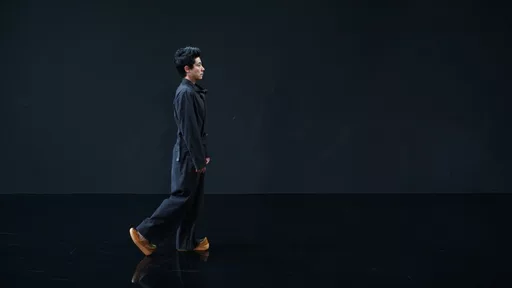
2 Freeman, Time Binds, p. 120.
3 zach ๋࣭ ⭑¨̮ (@zer4ph), “being horny is sort of anticapitalist. horniness doesn’t have a schedule, nor a timed structure to follow. it is sporadic and fierce. it is unrestricted by the 9-5 working day. it tows against the plight of capitalism by simply being. time is capitalist. horniness defies that,” Twitter, 28 February 2021, 12:36 a.m.,twitter.com
Related
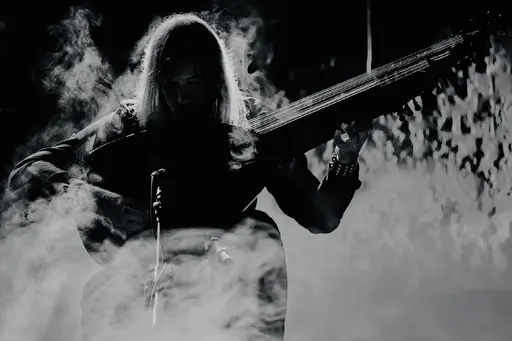
In dit korte afro-futuristische verhaal, geschreven door Amiri Baraka in 1995, ontdekt een ongenaamde uitvinder een manier om terug te reizen door de tijd – door muziek. “I duwde de Anyscape in de Rhythm Spectroscopic Transformation. En toen stemde ik het af zodat Anywhereness kan worden gecombineerd met de Reappearance als muziek!” legt de uitvinder uit. “Nu voeg ik Rhythm Travel toe! Je kunt verdwijnen en verschijnen waar en wanneer die muziek speelde.”

Tijdsgebonden drag, erohistoriografia, chronomornativiteit, geilheid onder het kapitalisme, ritme, dansen en 'crip time'. Dit zijn een paar van de onderwerpen die worden genoemd in het interview met Elizabeth Freeman, queer theoreticus en auteur van de boeken Time Binds: Queer Temporalities, Queer Histories (2010) en Beside You In Time: Sense Methods & Queer Sociabilities in the American 19th Century (2017), en Amelia Groom, co-editor van de 'No Linear Fucking Time' focus op Prospections.
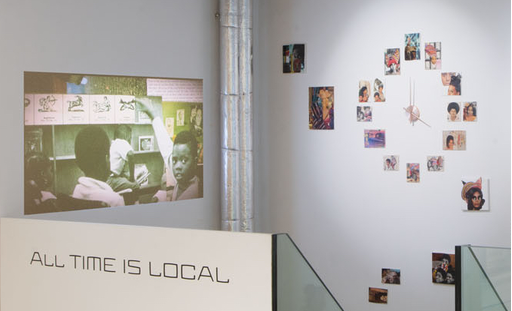
Reclamations of time, geared toward community and temporally “local” orientations, animate this interview with artists and activists Black Quantum Futurism (Rasheedah Phillips and Camae Ayewa), who draw from Afrofuturism, quantum physics, and “Afrodiasporic traditions of space and time that are not locked into a calendar’s date or a clock’s time." As discussed in the interview (which first appeared in Toward the Not Yet: Art as Public Practice, published by BAK and MIT Press, 2021), BQF’s recent and forthcoming projects directly challenge imperial and colonial standardizations of time.
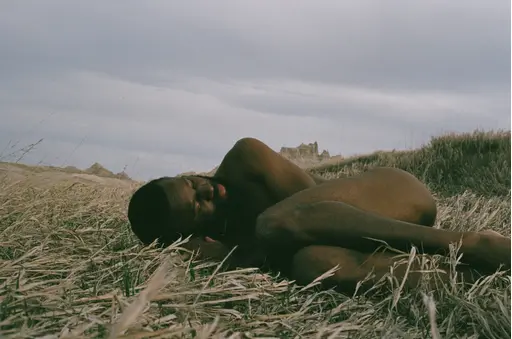
Dit essay, oorspronkelijk gepubliceerd in het Journal of Interdisciplinary Voice Studies, is een onderdeel van muzikant en schrijver JJJJJerme Ellis’s veelzijdige project The Clearing. Ellis beschrijft het bos en zijn open plekken als “plekken van weerstandige ‘black oralities’” en verkent hoe stotteren, Blackness en muziek kunnen figureren binnen de praktijken van het weigeren van hegemonisch tijdsbeheer, spraak en ontmoeting.
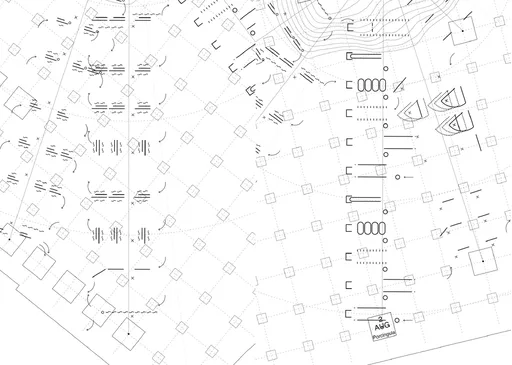
Wanneer inheemse gemeenschappen worden gevraagd om bewijs te tonen van hun traditionele connectie met hun voorouderlijke landen, respecteert wat Westerse legale instanties accepteren als documentatie niet volledig hoe stammencultuur en traditionele manieren van kennisoverdracht werken. Het onderzoeksproject en boek The Language of Secret Proof (2019), geschreven door Nina Valeria Kolowratnik, reageert op de ervaring met de productie van bewijsmateriaal van bewoners in Jemez Pueblo, New Mexico. Dit boek bevecht de omstandigheden waaronder de rechten van inheemse volken om traditioneel land te beschermen en terug te winnen worden behandeld in het wettelijk kader van de Verenigde Staten.

SEA – SHIPPING – SUN (2021) is een korte film en meditatie over maritieme handelsroutes, geregisseerd door Tiffany Sia en Yuri Pattison. De film werd opgenomen over de span van twee jaar, maar is geedit om het eruit te laten zien alsof het één dag is, van zonsopgang tot zonsondergang. De film speelt de soundtrack van scheepsberichten uit het archief van BBC Radio 4 uitzendingen. SEA – SHIPPING – SUN werd gemaakt met de intentie om de kijker slaperig of relaxed te laten voelen, en verzamelt een visie van verstrengeling. Wij worden achtergelaten met de overblijfselen van geschiedenis: een zachte, wiegende waltz over de zee.
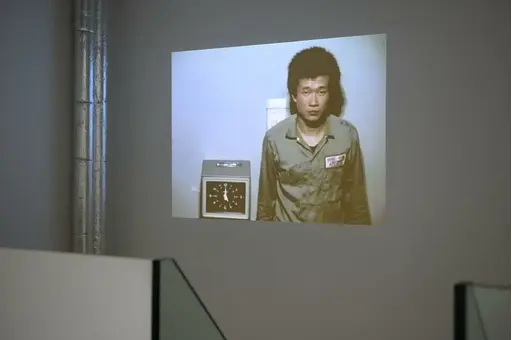
In dit essay reageert Amelia Groom op Tehching Hsieh's werk Time Clock Piece (One Year Performance 1980–1981) (1980-1981), een van de stukken die te zien is als onderdeel van de tentoonstelling No Linear Fucking Time bij BAK, basis voor actuele kunst, Utrecht. Door een lezing van het gelijktijdige anti-werk lied 9 to 5 (1980) van Dolly Parton reflecteert Groom op de historische verschuivingen in de manieren waarop werknemers werden en nog steeds worden uitgebuit door technieken van tijdsdiscipline.

Grappling with the imposed linearity of timespace as a fundamental feature of colonial violence, this essay by Promona Sengupta (also known as Captian Pro of the interspecies intergalactic FLINTAQ+ crew of the Spaceship Beben) proposes a mode of time travel that is “untethered from colonial imaginations of the traversability of time and space.” While coloniality has enforced an externalization of time and space as things outside the body, Sengupta affirms practices of relational care and survival that restore time and space as embodied realities.

Weird Times (2021) is een chapbook van 30 pagina's door kunstenaars Tiffany Sia en Yuri Pattison over de tijd aflezen en hegemonie. Het bevat Sia's schrijfwerk en beelden geselecteerd door Pattison, en geeft een korte geschiedenis weer van de ontiwkkeling van technologieën voor tijdregistratie. De klok wordt gedemonteerd als een politiek werktuig, een metronoom van dwang en een versneller van oorlogsmacht. Uit deze mechanieken verschijnen weerstandige ‘counter-tempos'.
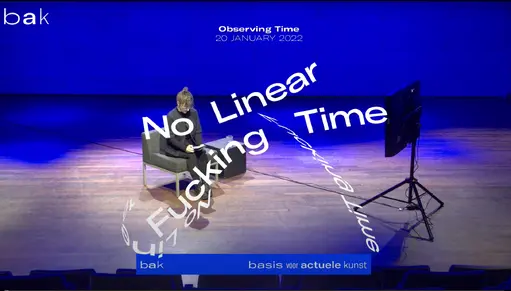
Een online gesprek met performance kunstenaar Tehching Hsieh, schrijver Amelia Groom en schrijver en curator Adrian Heathfield, geleid door Rachael Rakes, BAK curator Public Practice, op 20 januari 2022. Het gesprek neemt Hsieh's werk als uitgangspunt voor het bespreken van onder andere perfomatieve tijd, werktijd, gaten en ritmes van uithoudingsvermogen.
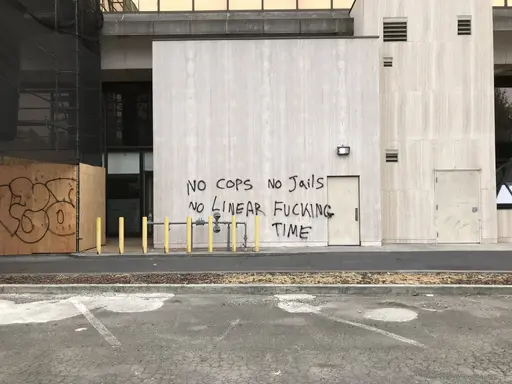
The No Linear Fucking Time Bibliografie is een zich ontwikkelend naslagwerk waarin wetenschappelijke en artistieke teksten worden gebundeld die betrekking hebben op de verscheidene onderzoekslijnen binnen dit project.

In ‘Reclaiming Time: On Blackness and Landscape’ (voor het eerst gepubliceerd in PN Review issue 257 in 2021), bekijkt dichter en schrijver Jason Allen-Paisant de geracialiseerde maatschappelijke contexten en moderne milieuconstructen die ‘Zwarte levens disproportioneel beroven van de voordelen van tijd.’ Hij put uit zijn poëziebundel Thinking with Trees om een koloniale epistemologie van de natuur te schetsen, en de rol van poëzie te benadrukken in het genereren van vormen van Zwart verwantschap en politiek bewustzijn, gebaseerd op een hernieuwd gevoel van ‘diepe tijd’. De vraag of het mogelijk is om middels poëzie ‘tijd terug te claimen’ staat centraal in de tekst.
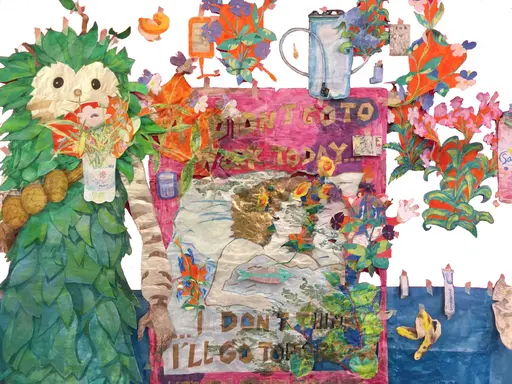
Als hij door de ‘Nothing To Declare’ uitgang van het vliegveld London Stansted loopt, ziet Sam Keogh drie grensbewakers: een varken, een eenhoorn en een bezorgde cartoonklok. Pig Eater is het script voor een monoloog dat voor het eerst opgevoerd werd als onderdeel van Keogh’s tentoonstelling Sated Soldier, Sated Peasant, Sated Scribe, in Goldsmiths Centre for Contemporary Art, Londen in 2021. Het verweeft fantasieën over overvloed en de afschaffing van werk; over feesten en rusten; over sabotage, anachronisme en het ‘opfokken’ van lineaire tijd.

In dit gesprek met Walidah Imarisha (voor het eerst gepubliceerd in Toward the Not Yet: Art as Public Practice, BAK en MIT Press, 2021), schetst de schrijver en activist haar concept van ‘visionaire fictie’ als een verbeeldingspraktijk om toekomsten te verlossen van het bolwerk van lineaire tijd. Imarisha put uit haar werk als strafrechtelijk abolitionist, en spreekt specifiek tot de bewegingen en ideeën die voortkomen uit de Zwarte strijd in de Verenigde Staten. Ze benadrukt dat we ons bij het veranderen van de toekomst moeten verhouden tot het verleden: ‘specifiek vanuit een kader gericht op gedekoloniseerde, niet-lineaire dromen van vrijheid die gegrond zijn in de strijd van gemeenschappen van kleur voor autonomie en bevrijding van kolonialisme.’
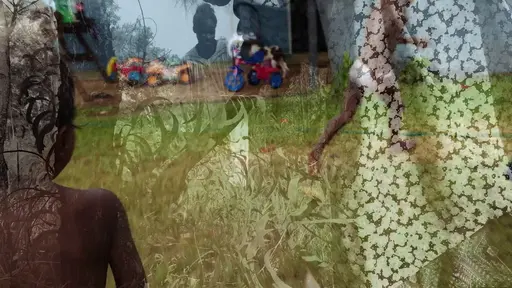
In haar essay ‘In Some Places the Not-Yet Has Long Been Already’ (voor het eerst gepubliceerd in Toward the Not Yet: Art as Public Practice, uitgegeven door BAK, basis voor actuele kunst en MIT Press, 2021) put Elizabeth A. Povinelli uit haar werk als onderdeel van het Karrabing Film Collective. In de tekst contrasteert ze de temporele oriëntatie van het laat-koloniale liberalisme – getroebleerd door de op handen zijnde catastrofes van een totale klimaatinstorting – met de voorouderlijke catastrofes van kolonialiteit en slavernij, die zowel van het verleden als het heden zijn. Deze voorouderlijke catastrofes, aldus Povinelli, ‘blijven groeien uit de grond die kolonialisme en racisme hebben bewerkt, in plaats van op te duiken aan de horizon van liberale vooruitgang.’

‘Dysfluent Waters’ is onderdeel van het multidimensionale project The Clearing van muzikant en schrijver JJJJJerome Ellis, respectievelijk een boek uitgegeven door Wendy’s Subway en een gelijknamig album uitgebracht door NNA Tapes in 2021. Hij ziet het bos en haar open plekken als ‘plaatsen waar al eeuwenlang verzet plaatsvindt middels zwarte gesproken cultuur.’ Ellis onderzoekt hoe stotteren, zwartheid, en muziek een rol kunnen spelen bij verzetspraktijken tegen dominante voorschriften voor de beleving van tijd, spraak en ontmoeting.

In haar tekst ‘Dearest Zen (Letters to Lichen)’ presenteert kunstenaar en wetenschapper Adriana Knouf toekomstige liefdesbrieven aan korstmossen: de samengestelde symbioten van schimmels en algen of cyanobacterieën. Bezien door de lenzen van de ‘xenologie’ (Knouf’s term voor de studie, analyse en ontwikkeling van het vreemde, buitenaardse en andere) en trans*-tijdelijkheden, onderzoekt ze manieren om te leren van, en opgetogen mee te doen met, intimiteiten en uitwisselingen tussen verschillende organismen.

In ‘Immortals: on the Ancient Future Lives of Stone and Plastic’ verweeft Marianne Shaneen verhalen, geschiedenissen en ontologieën van twee materialen: steen en plastic. Als quasi-onsterfelijke substanties zijn steen en plastic getuige van de catastrofale effecten van uitbuitende lineariteit, terwijl hun levensloop veel langer is dan dat van een mensenleven. Dit essay verweeft deze twee materialen, die schommelen tussen het geologische en synthetische, en die diep ingebed zijn in industrieel-kapitalistische ontwikkeling.

‘The Clearing: Melismatic Palimpsest’ is onderdeel van het multidimensionale project The Clearing van muzikant en schrijver JJJJJerome Ellis, respectievelijk een boek uitgegeven door Wendy’s Subway en een gelijknamig album uitgebracht door NNA Tapes in 2021. Hij ziet het bos en haar open plekken als ‘plaatsen waar al eeuwenlang verzet plaatsvindt middels zwarte gesproken cultuur.’ Ellis onderzoekt hoe stotteren, zwartheid, en muziek een rol kunnen spelen bij verzetspraktijken tegen dominante voorschriften voor de beleving van tijd, spraak en ontmoeting.